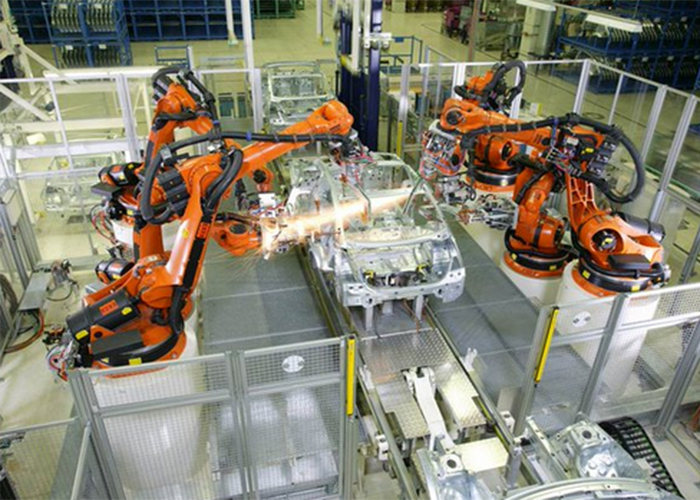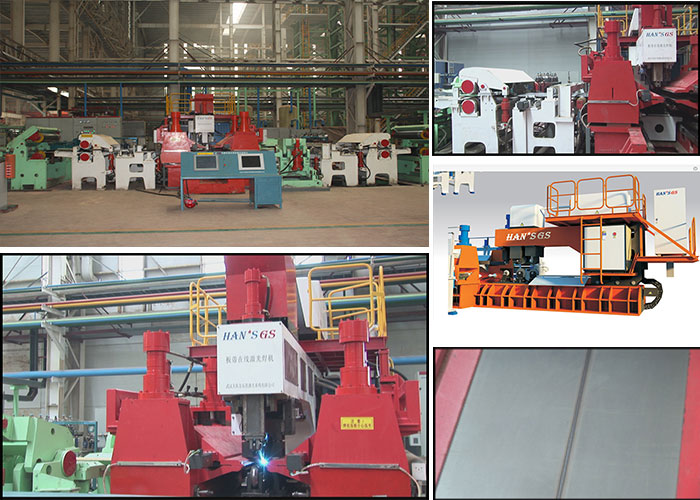What are the applications of laser welding technology in the automotive field
Laser welding has received widespread attention in the fields of aerospace, machinery, electronics, automobiles, shipbuilding and nuclear energy engineering due to its advantages of high energy density, deep penetration, high precision, and adaptability. Especially in automobile production, laser welding has been widely used in both body assembly and automobile parts production. According to related statistics, 50% to 70% of auto parts in industrialized countries in Europe and the United States are manufactured by laser processing. Laser welding and cutting are the main components. Laser welding has become a standard process in automobile production.

Laser welding application technology
1, car body laser welding technology
The automobile body is a typical thin-plate shell structure, which is stamped, cut, and shaped into a cover by a low-alloy high-strength steel sheet and assembled by welding. Thousands of solder joints are available in the body assembly, and the traditional spot welding uses resistance spot welding. The resistance spot welding process uses two electrodes to press the workpiece from two directions, pressurize and energize the two bridges so that solder joints are formed between the contact surfaces and the workpieces are welded together. In order to meet the requirements of combination and shape, each solder joint must maintain a certain interval. When spot welding, the welding clamp is welded under the edge of the workpiece, the flange width needs 16mm; while the laser welding is single-side welding, the flange width is only 5mm. Changing from spot welding to laser welding can save 40kg of steel per vehicle.
The narrow and deep weld formed by laser welding can easily penetrate the workpiece. There is no mechanical contact between the laser head and the piece to be welded, and there is no processing mechanical stress. The tensile strength and fatigue strength of the laser weld seam are comparable to those of the base metal and meet the requirements for bearing capacity. This can reduce the thickness of the component materials and reduce the weight of the vehicle body. At the same time, since the laser welding is controlled by a computer, it has strong flexibility and mobility, and can be welded to special-shaped door panels, baffles, gears, and instrument panels. Coupled with fiber optic transmission systems and robots, auto assembly line automation can be achieved.
2, laser welding technology
Laser welding is the most successful and most effective technology for laser welding in the automotive industry. When the automotive industry first applied tailor welded blanks, it was mainly to solve the problem that the width of the steel plate rolled by the rolling mill was not enough, and the tailor-welding technology was used to meet the requirements of the automotive industry for wide plates. With the development of the automotive industry, tailor-welded plates are developing in the direction of differential thick plates, and steel plates of different thicknesses can be welded together. At this time, the purpose of auto welding of steel plates is truly achieved. ThyssenKrupp, which invented the tailored laser blanking technology, applied this technology for the first time in the production of the Audi 100 in 1985. Laser welding technology is to manufacture bodywork, according to the performance requirements of different parts of the body, select the steel plate with different steel grades, types, grades and thickness, through laser cutting and welding, a part of the car body such as side wall, floor, Doors inside the door, pillars, etc. (see Figure 1) welded together and then stamping forming, the purpose is to ensure the strength of the body under the premise of reducing the body weight. This technology has a series of advantages:
(1) Equipment and processes for reducing the number of parts and a large number of stamping operations. Tailored welding can be integrally formed. According to the different requirements of different parts of the strength, the different thicknesses of sheet metal are welded together and stamped and formed again. At the same time, the accuracy of the body can be improved, and a large number of stamping processing equipment, processes and molds can be reduced.
Automotive parts using tailor welded plates

(2)Reduce the weight of components. Due to the use of different steel plates for splicing, coated steel plates can be used for easily corroded parts to increase the service life. Thinner steel plates can be used for places that do not bear loads or where the load is small, and high-strength steel plates can be used for places subject to loads. Welding ribs are no longer needed, which greatly simplifies the body structure, thereby reducing steel consumption and production costs, reducing body weight, and ultimately reducing vehicle energy consumption.
(3) Improve the structural quality and reliability of components. As a result of continuous welding instead of discontinuous spot welding and riveting, the body rigidity, fastening, and safety are greatly improved.
(4) It is possible to produce wide-body vehicles. Due to the limitations of rolling mills, it is impossible to produce steel plates that are too wide, and the requirements for wide plates are increasingly pressing. Laser welding is an effective and economical process. Laser welding makes the car more beautiful and comfortable.
On the basis of analyzing the structure of the car body, the optimization design is performed, and a few typical steel plate fittings are selected to improve the material utilization rate, eliminate the secondary processing process, and greatly reduce the number of molds. After adopting tailor-welded panels on the sidewalk production line of Toyota Motor Corporation of Japan, the number of parts decreased by 66%, the number of molds decreased from 20 to 4 and the material utilization rate increased from 40% to 65%. Using laser welding, a medium-sized car can reduce weight by 9kg without affecting its strength.


 中文
中文 English
English France
France العربية
العربية русский
русский español
español português
português srpski језик
srpski језик Việt Nam
Việt Nam
 中文
中文 English
English France
France العربية
العربية русский
русский español
español português
português srpski језик
srpski језик Việt Nam
Việt Nam






